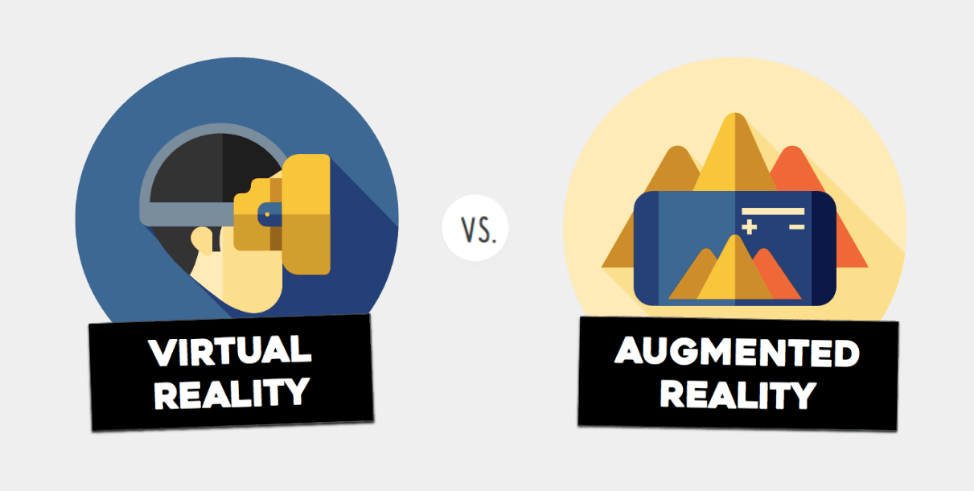
In recent years, Augmented Reality (AR) and Virtual Reality (VR) have moved from being futuristic concepts to real-world technologies shaping the way we work, learn, and interact. Once limited to gaming and entertainment, AR and VR are now transforming industries such as healthcare, education, retail, and even social communication.
These immersive technologies are not only changing how we experience digital content, but also how we connect with the physical world. Let’s explore the growing impact of AR and VR on everyday life.
What is AR and VR?
- Augmented Reality (AR) overlays digital information, graphics, or objects onto the real world. Popular examples include Pokémon Go, Snapchat filters, and AR navigation in Google Maps.
- Virtual Reality (VR), on the other hand, immerses users in a completely virtual environment using devices like the Oculus Quest or PlayStation VR.
While AR enhances the real world, VR creates a new one altogether. Together, they form the foundation of immersive technology.
AR and VR in Education and Learning
One of the most powerful impacts of Augmented Reality and VR is in education. Traditional textbooks and videos are giving way to interactive, immersive experiences.
- Virtual Classrooms: Students can explore the solar system, dive into the human body, or visit ancient civilizations in 3D.
- AR in Learning Apps: Apps like Google Expeditions and AR flashcards make subjects like science and history more engaging.
- Skill Training: Medical students can practice surgeries using VR simulations, while engineers can learn complex machinery through AR-based models.
By combining theory with real-world visuals, Augmented Reality and Virtual Reality make learning more effective and memorable.
Everyday Uses in Healthcare
AR and VR are revolutionizing healthcare by making diagnosis and treatment more accurate:
- Surgical Simulations: Surgeons can rehearse complex procedures in VR before performing them.
- Mental Health Therapy: VR is used in treating anxiety, PTSD, and phobias by creating safe, controlled virtual environments.
- Patient Education: Augmented Reality apps allow doctors to show patients how conditions affect their bodies, improving understanding.
This shift is making healthcare more accessible, interactive, and patient-friendly.
AR and VR in Retail and Shopping
Shopping has become more immersive thanks to AR and VR.
- Virtual Try-On: Customers can try clothes, makeup, or even furniture through Augmented Reality apps before buying.
- Virtual Stores: Brands like Nike and IKEA use VR showrooms to let customers browse and shop in a digital environment.
- Personalized Experience: AR-powered apps recommend products by scanning real-world spaces or analyzing user preferences.
These innovations are bridging the gap between online and offline shopping, making retail more interactive and customer-centric.
AR and VR in Entertainment and Social Interaction
The entertainment industry has been one of the biggest adopters of immersive tech.
- Gaming: VR games transport players into new worlds, while Augmented Reality mobile games bring virtual elements into real spaces.
- Movies and Experiences: VR headsets allow viewers to enjoy 360-degree films and live concerts from their living rooms.
- Social VR: Platforms like Meta’s Horizon Worlds enable people to meet, chat, and collaborate in a shared digital space.
Entertainment has become more personalized, interactive, and immersive than ever before.
Workplace and Productivity
Augmented Reality and VR are also transforming the modern workplace.
- Remote Collaboration: Virtual meeting rooms allow teams to brainstorm as if they were together, regardless of location.
- AR Work Instructions: Factory workers can use Augmented Reality glasses for real-time guidance, improving efficiency.
- Employee Training: VR-based training programs reduce costs and risks, especially in industries like aviation and manufacturing.
This means businesses can boost productivity, training quality, and collaboration using AR and VR.
Challenges of AR and VR
Despite their benefits, challenges remain:
- High Costs of VR headsets and AR devices limit accessibility.
- Health Concerns such as eye strain, dizziness, or motion sickness.
- Privacy Issues, since AR apps collect real-world data.
Addressing these issues is essential for wider adoption.
The Future of AR and VR
By 2030, AR and VR are expected to be part of daily life, just like smartphones today. Future developments may include:
- AR Smart Glasses replacing smartphones.
- Virtual Tourism, where people visit destinations digitally.
- Healthcare Breakthroughs through AR-guided surgeries.
- Metaverse Integration, combining AR and VR for seamless digital lifestyles.
Final Thoughts
From education and healthcare to shopping and entertainment, Augmented Reality and Virtual Reality are reshaping how we experience the world. These immersive technologies are breaking barriers between the physical and digital, making everyday tasks more engaging and efficient.
As hardware becomes more affordable and applications grow, AR and VR will no longer be optional, they’ll be an essential part of modern life. The impact of immersive technology is clear: our future will be more interactive, connected, and virtual than ever before. Also read cybersecurity in the age of AI.
